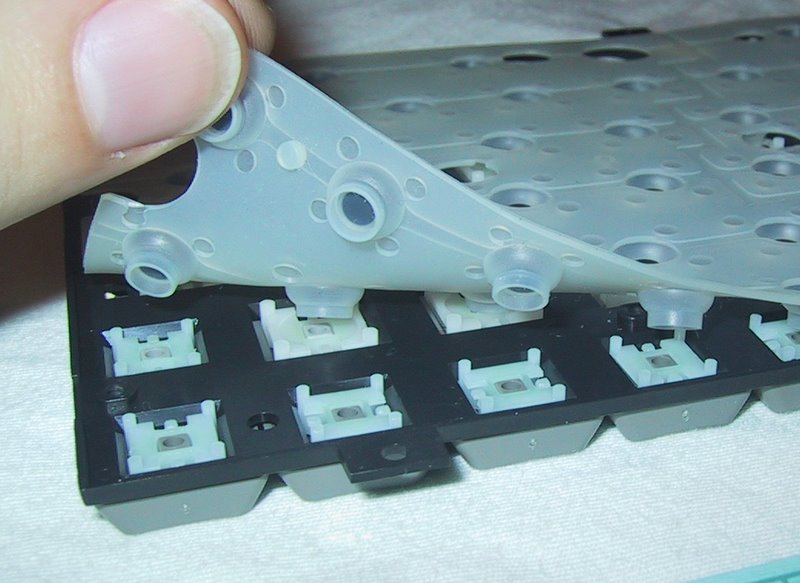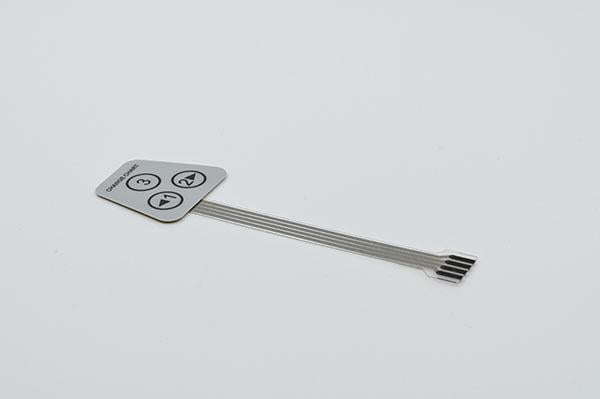It’s important to assess the capabilities of any membrane switch manufacturer before placing an order.
It’s important to assess the capabilities of any membrane switch manufacturer before placing an order.
Blog Article
All About Membrane Layer Change: Understanding Its Design and Performance
When you think about the control interfaces in modern devices, membrane buttons often come to mind. Let's explore what collections membrane changes apart from various other control systems.
What Are Membrane Buttons?

Their seamless nature makes them very easy to clean and immune to dust and wetness, a vital attribute in several environments. Membrane buttons can also be personalized concerning shape, size, and graphics, allowing suppliers to create distinct user interfaces tailored to specific items. Plus, they're light-weight and slim, which assists in decreasing the overall mass of devices. Generally, membrane layer switches play a substantial role in improving customer experience throughout a large range of applications.
Just How Membrane Switches Over Job
When you press a trick on a membrane switch, it turns on a simple yet effective device. The top layer, frequently made from adaptable material, lowers onto a conductive layer underneath it. This action bridges the void in between conductive traces, completing an electric circuit. As soon as the circuit shuts, it sends out a signal to the device's controller, which analyzes your input.
You'll see that the responsive feedback varies based upon the switch layout, providing either a soft click or an extra pronounced reaction. Once you launch the trick, the membrane layer returns to its original placement, reopening the circuit and quiting the signal. This procedure happens practically immediately, making certain a receptive customer experience.
Membrane layer buttons are prominent because of their durability and resistance to dust and dampness, making them ideal for numerous applications, from house appliances to medical gadgets. Understanding this procedure helps you appreciate their extensive use.
Trick Elements of Membrane Layer Switches
Recognizing the essential components of membrane layer switches is fundamental for comprehending their performance and style. The safety layer shields versus ecological aspects and use, extending the button's life expectancy. By recognizing these components, you'll gain insight right into how membrane switches over operate and their value in various applications.
Materials Used in Membrane Change Layout
The efficiency and longevity of membrane switches over heavily depend upon the products used in their style. You typically come across polyester and polycarbonate as key substratums as a result of their excellent stamina and flexibility. These products withstand scrapes and chemicals, making them perfect for requiring settings.
The conductive layers commonly use silver or carbon, selected for their integrity and conductivity. membrane switch manufacturer. Silver provides remarkable efficiency, while carbon is a cost-effective option. For the overlay, you could take into consideration a matte or glossy finish, depending on your aesthetic demands and user experience
Adhesives play a crucial duty also; they bond layers securely and ensure long life. Make certain to pick adhesives that endure environmental aspects like temperature level and moisture. Lastly, do not neglect the relevance of a good printing method for graphics, as it boosts both performance and aesthetic appeal. Picking the right products will ensure your membrane switch stands the examination of time.
Design Factors To Consider for Membrane Buttons
While designing membrane buttons, it's vital to take into consideration various variables that influence their capability and individual experience. Begin by focusing on the layout and button dimension; ensure they're instinctive and easy to navigate. Take into consideration the tactile feedback you want to provide-- will customers need a recognizable click or a softer touch? Additionally, think of the products you'll utilize, as they'll impact durability and looks.
Do not forget the visuals style; clear labeling and shade contrast are substantial for visibility. Verify your layout suits ecological variables, like moisture or temperature variations, which could impact efficiency. Lastly, remember the significance of screening prototypes with actual users to gather responses and make needed modifications. This iterative procedure aids you fine-tune the style, validating it meets both practical and aesthetic demands successfully. By meticulously thinking about these components, you'll create a membrane switch that boosts functionality and satisfaction.
Applications of Membrane Layer Switches
Membrane layer switches are flexible components discovered in numerous applications, from commercial devices to customer electronics. You'll see their effect in makers that call for sturdy user interfaces and in devices that benefit from streamlined styles. Recognizing these applications aids you value the performance and practicality of membrane layer buttons in everyday innovation.
Industrial Equipment Usage
When you're aiming to enhance the performance of commercial devices, membrane buttons use a trustworthy solution that integrates sturdiness with user-friendly style. These buttons are ideal for harsh environments, supplying resistance to dirt, moisture, and chemicals. You'll discover them in control panels for producing Source makers, cooling and heating systems, and medical gadgets, where precision and responsiveness are essential. Their low account indicates they fit perfectly right into different equipment, conserving useful area while maintaining ease of usage. With customizable graphics and backlighting alternatives, you can create an instinctive user interface for operators, boosting efficiency and security. Plus, their long life-span lowers upkeep expenses, making them a smart investment for your commercial applications. Accept membrane buttons to streamline your procedures and enhance overall performance.
Consumer Electronics Combination
In the domain name of customer electronic devices, membrane layer buttons play a necessary duty in boosting user communication and tool functionality. You'll find them in devices like microwaves, remotes, and pc gaming consoles, giving a smooth way to connect with innovation. Their smooth design permits for simple combination into various products, making controls user-friendly and easy to use. With their ability to incorporate graphics and backlighting, you can appreciate a modern-day visual that enhances the gadget's general look. Membrane layer buttons additionally ensure longevity and resistance to dirt and wetness, extending the life expectancy of your electronics. By choosing membrane switches, you improve not simply the performance but additionally the design of your devices, making everyday communications smooth and satisfying.
Benefits and Drawbacks of Membrane Layer Switches
While membrane buttons provide a variety of advantages, they additionally feature some downsides that you ought to think about. One substantial advantage is their portable layout, making them optimal for space-constrained applications. They're also affordable, giving a durable option with a low production expense. Furthermore, their seamless surface area is easy to clean, improving health in environments like hospitals.

However, there are negative aspects. Membrane switches can have a shorter lifespan compared to mechanical switches, specifically under heavy use. They can likewise be less tactile, which could influence individual feedback throughout procedure. If harmed, fixing them can be difficult and often requires complete substitute. Ultimately, their level of sensitivity to extreme temperatures and environmental conditions might restrict their performance in particular try this out settings. Balancing these benefits and drawbacks will help you determine if membrane switches are the right suitable for your job.
Regularly Asked Concerns
How Much Time Do Membrane Switches Typically Last?
Membrane switches over usually last between 5 to ten years, depending on usage and environmental problems. You'll intend to examine factors like wear, direct exposure to wetness, and temperature variations to evaluate their long life effectively.
Can Membrane Layer Switches Be Customized for Certain Layouts?
Yes, you can customize membrane layer buttons to fit certain layouts (membrane switch manufacturer). You'll have the flexibility to pick colors, shapes, and formats that match your project's demands, ensuring they mix perfectly with your general visual
What Is the Cost Variety for Membrane Layer Switch Production?
The cost variety for membrane switch production generally falls between $1 and $10 per unit, depending upon variables like style intricacy, quantity, and materials. You can get quotes from makers to locate the best alternative.

Are Membrane Layer Changes Water-proof or Immune?
Membrane layer switches can be designed to be water-proof or resistant, relying on products made use of and building and construction approaches. If you require them for wet environments, guarantee you specify those requirements during the style procedure.
How Do Membrane Changes Compare to Standard Buttons?
Membrane layer buttons are usually thinner and extra adaptable than standard buttons, supplying a streamlined style. They're usually less complicated to clean up and integrate, but could not give the responsive comments you're used to with mechanical options.
Conclusion

Report this page